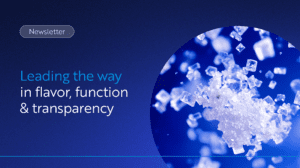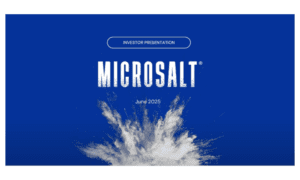Discover what’s driving a growing taste for less salt in the food industry and our personal lives.
Key takeaways:
- Consumer attitudes are turning against excess salt consumption.
- National and global organizations know food manufacturers are a leading cause of the high-sodium problem.
- These two factors are making low-sodium products more popular than ever.
Food manufacturers everywhere should have one question on their mind: “What’s driving the demand for less sodium?” This sector is booming as it keeps pace with an evolving regulatory environment and a consumer base that’s ready to take more control of what they eat.
It’s creating a healthier society that itself will be asking more of food manufacturers, who are increasingly being placed under scrutiny and held accountable for their production processes. Here’s what you need to know about this low-sodium revolution.
What’s driving the demand for less sodium?
Health concerns and increasing awareness of the dangers of excess dietary sodium are both on the rise as the detrimental effects of sodium consumption become more widely known. Processed and restaurant foods account for most of the daily sodium in the American diet (more than 70 percent), which contributes to chronic health conditions including hypertension, stroke, and heart disease.
Much of the world’s population is older than ever before, making this demographic more health-conscious by necessity. But they aren’t the only ones. A growing interest in healthier eating habits can be found across all age groups. Children have been consuming incredibly harmful amounts of salt, which has put schools under increasing pressure to feed kids responsibly. The United States Department of Agriculture (USDA) is now seeking a 10 percent reduction in school-meal sodium by 2024.
Other powerful and positive influences from health organizations and government regulators are also driving the demand for low-sodium products. Some key examples:
- The World Health Organization (WHO) – A concentrated effort to cap global sodium consumption at five grams per day is in its third year of global low sodium benchmarks. These will dramatically reduce the amount of sodium in the world’s manufactured foods and require significant production changes for many brands.
- The USDA – The USDA published its Dietary Guidelines for Americans: an extensive resource for both the public and food manufacturers that outlines steps toward adopting a healthier low-sodium lifestyle by 2025.
- The Centers for Disease Control and Prevention (CDC) – The CDC offers many resources to educate the public about the risks of excessive sodium and the benefits of making healthier dietary and lifestyle choices.
- The Food and Drug Administration (FDA) – 2021 saw the FDA publish its voluntary Guidelines for Industry, an educational resource for food manufacturers filled with recommendations to make production processes less sodium-heavy.
With this drive toward lowering the public’s sodium intake, it’s a given that the market must respond and adapt by providing alternatives to reflect changing demands. But just how much are those demands changing?
Forecasting the low-sodium future
Estimating an increasing demand for low-sodium snacks isn’t just wishful thinking. The hard numbers and visible trends are there to support the most optimistic of predictions:
- Consumers want “clean” food labels. This means ingredient lists they can understand, and which clearly show how much sodium is present in their food. Indecipherable labels or those revealing high sodium contents are a turnoff to increasingly sodium-savvy consumers.
- Harmful nitrites and nitrates are also falling out of favor as dangerous forms of sodium.
- Sodium tracking technologies such as health apps are letting consumers monitor their daily sodium intake with ease to inform their buying decisions.
Predictions for the future demand for low-sodium snack foods are universally positive. A projection from Grand View Research, for example, is indicative of this upward trend, showing the U.S. low-sodium snack market worth over $54 billion and set to climb annually into 2030.
The snack market is changing, and any manufacturer who can introduce great-tasting, lower-sodium alternatives to traditional salty favorites – chips, soups, popcorn, deli meats – will have an edge. But only if the “low sodium equals bland” attitude can be reversed.
The very best manufactured snack foods in the low-sodium sphere include SaltMe®! Chips, Trader Joe’s cashews, and Annie Chun’s roasted seaweed snacks. These three examples illustrate how easily snacks can slash the salt and still be tasty, providing the public with healthier alternatives to perennial favorites.
Low-sodium awareness
National and global organizations are teaching the world just how bad the excess sodium situation has become. More and more consumers are taking charge of their health by educating themselves on the dangers of sodium. , And it’s never been easier to develop valuable critical skills like decoding food labels to understand exactly how much sodium (not to mention other unhealthful ingredients) is lurking in our food.
The role of the snack food industry in promoting low-sodium options is a crucial one. The choices manufacturers make about what goes into their products have a profound effect on public health – for better or for worse. By making responsible decisions regarding sodium content, the snack food industry can claim a vital place in a healthier society.
Some final food for thought
Adults, families, and healthcare stakeholders all agree that it’s time for a lower-sodium world, which opens up a huge opportunity for responsible (and savvy) food manufacturers. If you’re one of them, MicroSalt® can provide you with an all-natural way to deliver twice the taste sensation of traditional salt with only half the sodium.
It’s ideal for food manufacturing applications and doesn’t have any of the harmful side effects or additives found in “solutions” like potassium chloride. Call 1-877-825-0655 or connect via our message page to learn more about our multi-award-winning mission.




